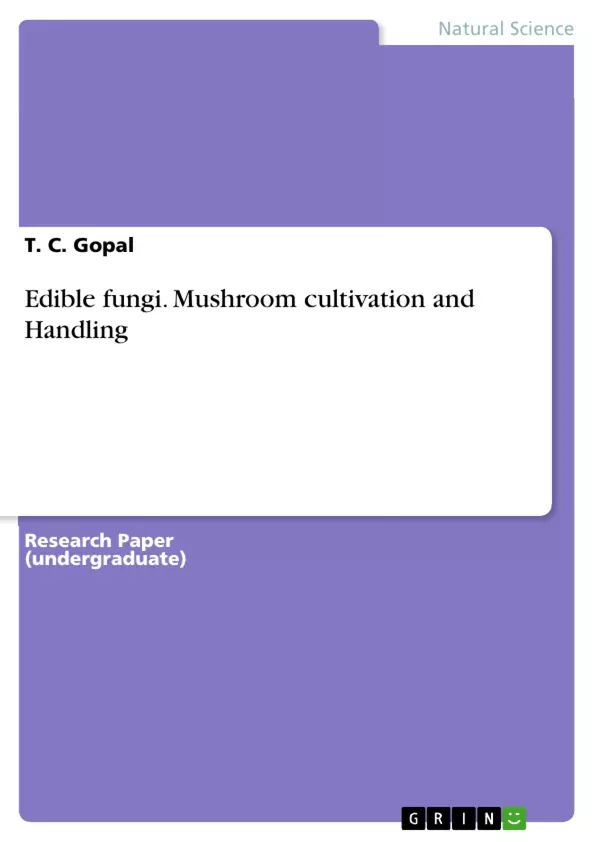The present data represents the concept, types, uses and values of mushroom. Fungi called mushrooms are prized for both their flavor and their nutritional content. They are a great natural source of vitamin D and low in salt and sugar. Growing in popularity among new business owners is mushroom cultivation. They are grown using specially bred spawns on a compost that has been properly prepared. Due to their delicate nature, they must be handled quickly to prevent rapid deterioration. As a result, they go through a variety of processing techniques, including drying, freezing, canning, pickling, and sterilization. In addition to preserving them, these techniques aid in flavour development, much like pickling.
Inhaltsverzeichnis (Table of Contents)
- Introduction
- Types of edible Mushroom
- Uses
- Food Values
- Edible Mushrooms
- Importance of mushroom cultivation
- Selection of appropriate material for compost preparation
- Selection of composting method
- Long Method of Composting
- Short Method of Composting
- Understanding of good compost attributes
- Selection of commercially important type of mushrooms
- Designing and construction of mushroom farm
- Disease control and pest management of Mushrooms
- Major Diseases of Mushroom
- Bacterial Diseases:
- Types of nematodes:
- Casing and pinning for cultivation
- Mushroom processing and preservation
- Packing and labeling for transport
- Marketing:
- Utilization of spent substrate
- Conclusion
- Reference
Zielsetzung und Themenschwerpunkte (Objectives and Key Themes)
This text aims to provide a comprehensive overview of mushroom cultivation and handling, covering topics from the biology of mushrooms to their commercial production, processing, and marketing. It focuses on the various types of edible mushrooms grown in India and emphasizes the economic importance of mushroom farming in both rural and urban areas.
- Mushroom Biology and Cultivation
- Types and Properties of Edible Mushrooms
- Compost Preparation and Mushroom Farming Techniques
- Disease Control and Pest Management in Mushroom Production
- Mushroom Processing, Preservation, and Marketing
Zusammenfassung der Kapitel (Chapter Summaries)
The text begins by introducing the fascinating world of mushrooms, highlighting their culinary and nutritional significance. It then dives into the specific types of edible mushrooms prevalent in India, including Paddy Straw, Oyster, Button, Shiitake, Milky, and Jew's Ear mushrooms. Each type is described in detail, outlining its characteristics, growth habits, and nutritional value.
Further chapters delve into the crucial aspects of mushroom cultivation, starting with the importance of selecting the right materials and methods for compost preparation. Different composting techniques, such as the long and short methods, are explored in detail. The text also emphasizes the importance of recognizing good compost attributes for successful mushroom growth.
The subsequent chapters discuss the selection of commercially important mushroom varieties, the design and construction of mushroom farms, and the crucial aspects of disease control and pest management. These chapters provide practical insights into the challenges and solutions faced by mushroom cultivators.
Schlüsselwörter (Keywords)
Edible fungi, mushroom cultivation, compost preparation, mushroom types, disease control, pest management, mushroom processing, preservation, marketing, economic importance, nutritional value.
- Quote paper
- T. C. Gopal (Author), 2023, Edible fungi. Mushroom cultivation and Handling, Munich, GRIN Verlag, https://www.hausarbeiten.de/document/1405940


